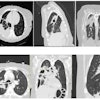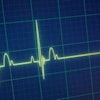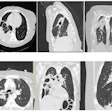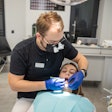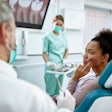
NEW YORK (Reuters Health) April 6 As a treatment for mild to moderate obstructive sleep apnea (OSA), continuous positive airway pressure (CPAP) provides greater physiologic, symptomatic, and quality-of-life benefits than the use of an oral appliance or conservative measures, Chinese researchers report.
In addition, weight loss seems to improve sleep parameters, but most patients are unable to achieve an apnea-hypopnea index of less than 5 with weight loss alone, according to the report in the April issue of Thorax.
The authors of the report note that their randomized trial is not the first study to compare nonsurgical treatments for OSA. However, with the exception of one recent trial, all prior studies have involved only two treatment arms. Moreover, most of the earlier studies have focused solely on the impact on sleep parameters, not examining the effect on overall functional status.
In the current investigation, Dr. Mary S. M. Ip and colleagues, from The University of Hong Kong, assessed daytime sleepiness, health-related quality of life (HRQOL), and related physiologic parameters in 101 patients with mild to moderate (average apnea-hypopnea index at baseline, 21.4) who were treated with conservative measures alone or in combination with CPAP or an oral appliance for 10 weeks.
The conservative measures included general advice on sleep hygiene and, if overweight, referral to a weight control program. CPAP was delivered at a pretitrated pressure, and a nonadjustable oral appliance was tailor-made for each patient by an orthodontist.
OSA was assessed by polysomnography. Daytime sleepiness was evaluated with the Epworth Sleepiness Scale, and HRQOL was assessed with the 36-item Short-Form Health Survey and the Sleep Apnea Quality of Life Index.
CPAP improved sleep-disordered breathing better than the oral appliance, which, in turn, improved breathing better than conservative measures alone. The apnea-hypopnea index decreased by 21.0 with CPAP and by 10.3 with the oral appliance, but was almost unchanged in the conservative management group. Moreover, CPAP was associated with significantly better relief from sleepiness.
Compared with the other treatments, CPAP significantly improved the "bodily pain" domain of the Short-Form Health Survey. CPAP also improved the "physical function" domain relative to conservative measures alone.
CPAP and the oral appliance were comparable in their ability to improve Sleep Apnea Quality of Life scores over and above that seen with conservative measures alone. Both active treatments significantly reduced morning diastolic blood pressure to a similar extent.
Consistent with previous reports, as body weight fell, the apnea-hypopnea index improved. However, just about 10% of patients were able to achieve an index of less than 5 with weight loss alone.
"CPAP produced the best improvement in terms of physiologic, symptomatic, and HRQOL measures, while the oral appliance was slightly less effective," the authors conclude.
However, they point out that "if an oral appliance could correct sleep-disordered breathing events to the same extent as CPAP, the improvement in functional and other outcome measures might also be similar to that seen with CPAP treatment."
Thorax 2007;62:354-359.
Copyright © 2007 Reuters Limited. All rights reserved. Republication or redistribution of Reuters content, including by framing or similar means, is expressly prohibited without the prior written consent of Reuters. Reuters shall not be liable for any errors or delays in the content, or for any actions taken in reliance thereon. Reuters and the Reuters sphere logo are registered trademarks and trademarks of the Reuters group of companies around the world.
